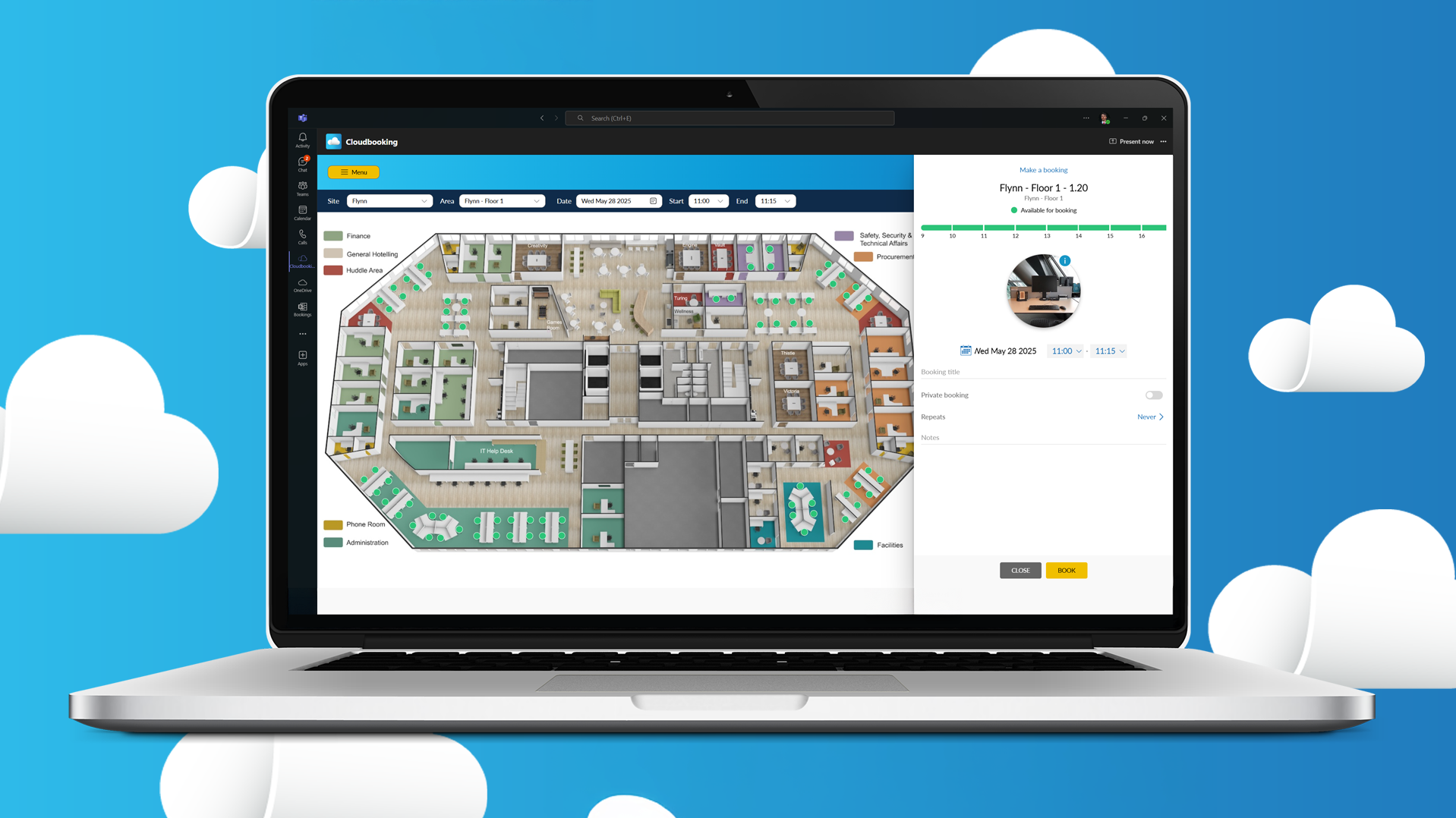
Dive into eight takeaways and insights from The Future of Work: 8 Trends in Workplace Transformation report, our exclusive report on the future of the workplace.
In 2021, Cloudbooking commissioned a YouGov survey of over 2,000 office workers in the US and the UK to find out how their working conditions changed at the height of the pandemic.
These findings, compiled in The Hybrid Workplace: An Employee Census report, illustrated how workforces were adapting to the massive exodus to remote work. At the time, an overwhelming majority (93%) told us they were against a full-time return to the office and full-time work-from-home arrangements.
Related Reading: The Hybrid Workplace: An Employee Census
In other words, office workers wanted the best of both worlds — a hybrid workplace.
A year and a half later, Cloudbooking is back with another YouGov survey to determine how worker attitudes have changed amid the easing of lockdowns and organisations planning their post-pandemic working environments.
You can go through the full findings in The Future of Work: 8 Trends in Workplace Transformation to discover these recent changes in working habits and workplace conditions. We’ve also compiled these insights into eight key takeaways highlighted below.
The future of the workplace: A workforce with nuanced needs
Our follow-up to our 2021 YouGov survey and report offers telling insights into the more visible role of the hybrid workplace.
We found that hybrid working methods have found their way into the language of businesses and workforces in the US and the UK, providing a glimpse into the future of the workplace.
The call to action for employers and organisational decision-makers is clear.
Related Reading: The Future of Working from Home: Hybrid Office or Remote Work?
1. One in two employees is a hybrid worker
Hybrid workers were a minority in the pre-pandemic workplace. Now they make up half of the workforce in the US and UK. But employers are still deciding whether hybrid working will be a permanent fixture of the workplace.
What’s clear, however, is that most workers are demanding the best of both worlds — remote work and in-office work.
2. More British than American workers want hybrid working to be the future of work
There’s a divide between US and UK workers’ perspectives on making hybrid working permanent.
This gap appears to be driven by differences in work cultures. For example, many US employers are now calling for a return to the office — some are even pushing for full-time office work. In contrast, UK employers seem more amenable to making hybrid work permanent. This may be due to external pressures affecting the UK, such as labour shortages.
Our findings show that a rigid return to the office would be misguided. The risk is a demotivated workforce — one that questions whether their employers even consider their interests.
Related Reading: The Future of Work: How the Way You Work Will Change in 2022
3. The majority of workers are less likely to join organisations with no hybrid work policy
Two-thirds of workers say they’d be less likely to work for a company that doesn’t offer hybrid working. Employers, hiring managers, and recruiters must consider hybrid and remote working as key components of talent acquisition. Those who refuse to acknowledge these new ways of working risk limiting their ability to reach top talent.
Related Reading: How to Write a Hybrid Working Policy: 9 Things to Include
4. Workers are split on remote working’s impact on company culture
We found no clear consensus on whether remote working stifled the process of building company culture. This begs the question: what role does the office play in an organisation’s values and goals? We’ve all been forced to reimagine the workplace to fit the changing needs of modern society.
Today’s workplace is no longer the single, physical space it once was. It can be viewed more as a collection of physical and digital facilities promoting maximum productivity and well-being in a way that’s more aligned with current employee needs and corporate values.
5. Most employees felt productive when working from home. But there’s a catch.
Roughly two-thirds (65%) of workers felt that home pressures, such as housework and childcare, did not negatively impact their ability to be productive when working from home. Interestingly, fewer women than men had problems with working from home — this may align with other studies showing that women appreciate remote work because of the flexibility it gives them for childcare and housework.
These new patterns emerging in people’s working habits show that working from home is unlikely to mean simply replicating office hours at home. For many, it means juggling tasks amid the blurring lines of home and work life.
6. Employers need to work harder to build a workplace community and prevent worker isolation
Nearly half (43%) of all respondents said they felt less connected to their organisations when working remotely. Employers face the challenge of building and sustaining a sense of community among hybrid and remote workers, ensuring no one feels isolated and faces a greater risk of developing poor mental health.
7. Workers are less concerned about using desk and room booking for social distancing
As elevated concerns over social distancing in the workplace subside, companies can focus on building flexible workplaces conducive to productivity, communication, and collaboration. Employers can focus on two goals:
- Creating a more flexible and collaborative workplace that brings out the best in workers
- Driving office real estate efficiencies through dynamic workspace usage. Now is the time to consider using desk booking and meeting room booking systems to optimise your office footprint.
8. Gen Z employees don’t want to only work from home.
Our findings show that employers should avoid jumping to conclusions about worker generations. Gen Z-ers, for example, are more likely to have a negative view of working only from home because they want the connections and mentorship experience of the traditional office.
The risk of making assumptions brings home the point that different individuals face entirely different circumstances. For instance, a 53-year-old female executive with no family may be more likely to want to spend more time in the office than a 35-year-old father of two.
Employers must consider their workers’ individual needs to determine the best approach to building a hybrid working environment.
What do our findings tell us about the future of the workplace?
The varied insights into employee motivations and needs presented in our latest report show that a company’s workforce is not a monolith. Calling workers back to the office who have spent the last two years at home requires consideration of their unique circumstances, needs, and motivations.
To get the full findings of our exclusive report on the future of the workplace, download The Future of Work: 8 Trends in Workplace Transformation by filling out the form below.



